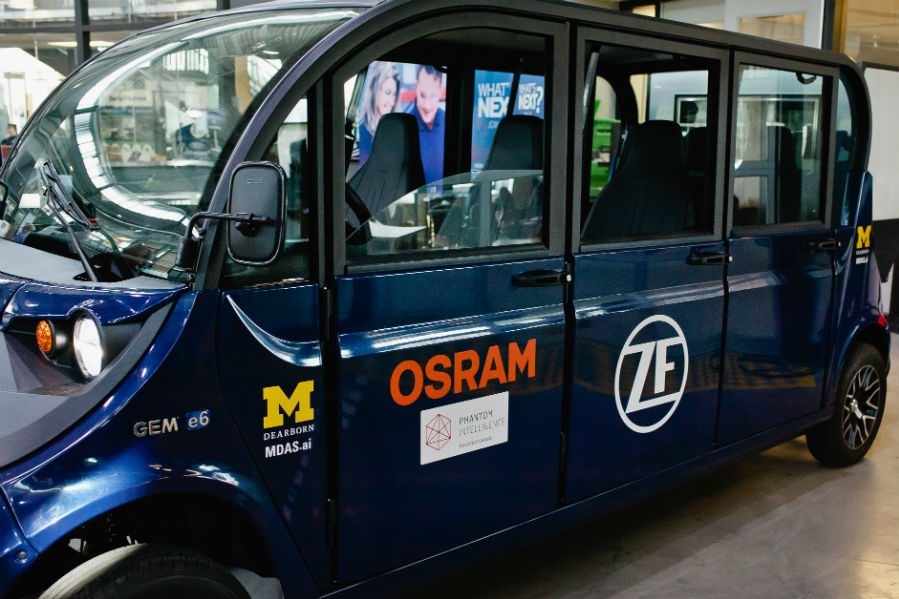
Late last month, the University of Michigan-Dearborn unveiled a new autonomous shuttle project called MDAS.ai, in which students and faculty will build a driverless vehicle for low-speed, pedestrian-filled environments.
Made possible through a collective $ 100,000 contribution from Osram Opto Semiconductors, Phantom Intelligence, Jungo Connectivity, and Vergence Automation, the project is designed to help students, researchers, and sponsoring companies puzzle through the complexities of autonomous driving.
Rajeev Thakur, a regional marketing manager at Osram, says the project came together after he bumped into an old college friend—one of the professors working on MDAS.ai—and discovered the scope of the project. Osram makes lighting technology and provides lasers and semiconductor devices to developers of LiDAR—Light Detection and Ranging, a sensor platform that allows cars to “see” their environment—so the company was eager to share in U-M Dearborn’s research.
“The project is a great vehicle for us to showcase our technology and test the shortcomings of sensors,” Thakur explains. “One issue is that there are so many variables and unknowns, it’s hard to simulate. The more I do this [mobility] work, the more I realize how amazing and fantastic the human brain is.”
Because there are so many different sensor and camera concepts associated with autonomous vehicles, and auto manufacturers are so secretive, Thakur says it can be a challenge for Osram to discover what its customers actually need.
“This project is appealing because it’s open and there are different stakeholders,” he says. “We can all learn about the shortcomings of different technologies and what more is needed to make them safer.”
The MDAS.ai shuttle will be built completely in-house by students and researchers from the university, offering them the chance to get hands-on experience with next-generation automotive technologies. As the project progresses, vehicle-to-infrastructure applications that allow the shuttle to communicate with traffic lights, street signs, and other smart city infrastructure will be integrated into the shuttle, Thakur says.
In addition to cash support, Osram will supply MDAS.ai with camera integration and semiconductor components; Phantom Intelligence will contribute two Flash LiDAR sensors intended to eliminate false triggers and reliably detect obstacles; Jungo Connectivity will provide software for driver and cabin monitoring; and Vergence Automation will supply a long-range infrared camera to improve the shuttle’s computer vision and machine learning capabilities.
Thakur says Osram’s goal with MDAS.ai is to work with startups and new ideas, and “go with the flow if something doesn’t work—it’s the American way.” In particular, the company is very interested in how Vergence’s camera will work with some of the parts supplied by Osram. By adding infrared to the camera, he says, the car would theoretically be able to see equally well during the day and night.
In the future, Osram sees itself as part of the autonomous vehicle ecosystem, Thakur maintains. He also predicts Osram will further develop eye-recognition technologies that could be a built-in component of a driverless car’s security network. He imagines passengers in self-driving cars could one day shop online while riding and use Osram’s iris-recognition technology during check-out to prevent identity theft.
“We see a very big niche,” Thakur adds. “There are so many technologies and problems to solve—we’re trying to help the mobility industry by seeding ideas. This project is a way to do that kind of free thinking.”
Sarah Schmid Stevenson is the editor of Xconomy Detroit/Ann Arbor. You can reach her at 313-570-9823 or sschmid@xconomy.com. Follow @XconomyDET_AA
(13)